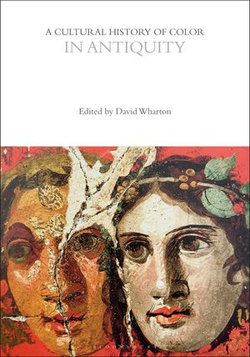
-
Books
-
Education
-
eBooks
-
Audio Books
-
Film & TV
-
Calendars, Diaries & Stationery
-
Giftshop

A Cultural History of Color in Antiquity covers the period 3000 BCE to 500 CE. Although the smooth, white marbles of Classical sculpture and architecture lull us into thinking that the color world of the ancient Greeks and Romans was restrained and monochromatic, nothing could be further from the… more
A Cultural History of Color in Antiquity covers the period 3000 BCE to 500 CE. Although the smooth, white marbles of Classical sculpture and architecture lull us into thinking that the color world of the ancient Greeks and Romans was restrained and monochromatic, nothing could be further from the truth. Classical archaeologists are rapidly uncovering and restoring the vivid, polychrome nature of the ancient built environment. At the same time, new understandings of ancient color cognition and language have unlocked insights into the ways – often unfamiliar and strange to us – that ancient peoples thought and spoke about color.
Color shapes an individual's experience of the world and also how society gives particular spaces, objects, and moments meaning. The 6 volume set of the Cultural History of Color examines how color has been created, traded, used, and interpreted over the last 5000 years. The themes covered in each volume are color philosophy and science; color technology and trade; power and identity; religion and ritual; body and clothing; language and psychology; literature and the performing arts; art; architecture and interiors; and artefacts.
David Wharton is Associate Professor of Classical Studies at the University of North Carolina at Greensboro, USA.
Volume 1 in the Cultural History of Color set.
General Editors: Carole P. Biggam and Kirsten Wolf
This item is delivered digitally
Thanks for reviewing A Cultural History of Color in Antiquity. We will process your review. Accepted reviews will be posted within 3-7 business days.
Be the first to know, stay up to date with what's trending and get staff picks in your inbox with our newsletter


Public: Allow anyone to view or shop your List
Private: No one can view or shop your List
We have kept your A&R details for your new Angus & Robertson account
We also noticed that you have previously shopped at Bookworld. Would you like us to keep your Bookworld order history?
We also noticed that you have an account on Bookworld. Would you like us to keep your Bookworld details, including delivery addresses, order history and citizenship information?
Share This eBook